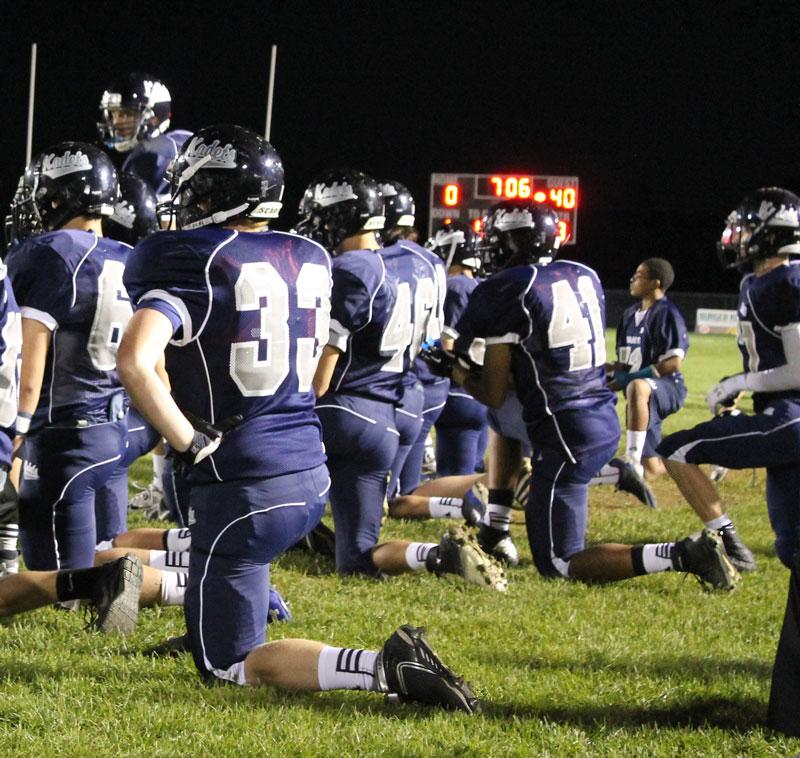Concussions: Disrupting Students’ Lives
Concussions are affecting Air Academy students’ everyday lives. A concussion is an injury where the brain strikes the inner skull at a high speed, causing many impairments to the body. Sasha Kandrach, a junior experiencing her eighth concussion, said that she “has constant headaches and can barely sleep at all.” Not only is her concussion disrupting her daily routines, but also her academic career. Sasha says that it has “forced [her] to miss a lot of school which is making [her] fall behind in [her] classes.”
She is also forced to get a tutor as she “can’t remember anything.” Another student who has been affected by a concussion is junior Adam Brown. Adam Brown got his concussion during the football team’s loss to Mesa Ridge, which has caused similar symptoms to Sasha’s, including a “changed sleeping pattern and a lack of focus in school.” These changes to daily life are very common in concussions as many of the main symptoms include: headaches, nausea, trouble concentrating, sleep problems, low energy levels, and sensitivity to light and sound.
The Center for Disease Control and Prevention estimates that 1.6 million to 3.8 million concussions occur every single year from sports. According to the Sports Concussion Institute, football is the most common sport for men to get a concussion in, as players have a 75% chance to acquire one during football season. For women, the most common sport to get a concussion in is soccer as players have a 60% chance to receive one during soccer season. Concussions are becoming more common and affecting more high school students every year. The severity of a concussion is determined by a grading scale of one to three, where one is the least significant and three is the most. The Colorado Medical Society claims that a grade three concussion is when the concussed player loses consciousness. A grade two concussion, also claimed by the Colorado Medical Society, is when the player has confusion and amnesia about the incident, but no loss of consciousness. A grade one concussion is when the player is only confused and does not have a loss of consciousness. However, there are many contradicting opinions about the severity of concussions and how they are graded.
If either Adam Brown or Sasha Kandrach wants to go back to playing their sport, they must first pass the “baseline concussion test” and be symptom-free for two weeks or more. Some long term effects of concussions are caused by abnormal brain wave activity, causing major attention deficits. Also, as the athlete becomes older, they obtain symptoms very similar to the early stages of Parkinson’s disease, such as impaired walking ability, stiff muscles, and tremors in the hand. These symptoms can often be avoided, however, if the athlete takes the necessary steps in recovering. To recover, athletes must avoid all mental and physical exercise, which even includes texting and watching TV; if one does not rest their mind and body, symptoms can worsen and make recovery even more difficult. Then, the athlete must be symptom free for two weeks, and cleared by a doctor in order to be allowed to play the respective sport. Concussions are a very serious threat to all athletes, not just the ones in high school, and should not be taken lightly even if there is a remote possibility of having one. We hope all of our high school athletes stay healthy and we wish Adam Brown, Sasha Kandrach, and all of our athletes with injuries a speedy recovery.

Hello my name is Brady Becco and I am one of the Senior Managing Editors for the Jetstream Journal. I enjoy having fun as I am a normal human being. I...













Brady Becco • Nov 11, 2013 at 11:50 am
What an incredible article this is!
Ashley Nelson\ • Nov 13, 2013 at 8:43 am
Nice job Brady! Greeeeaaaattt Work!!